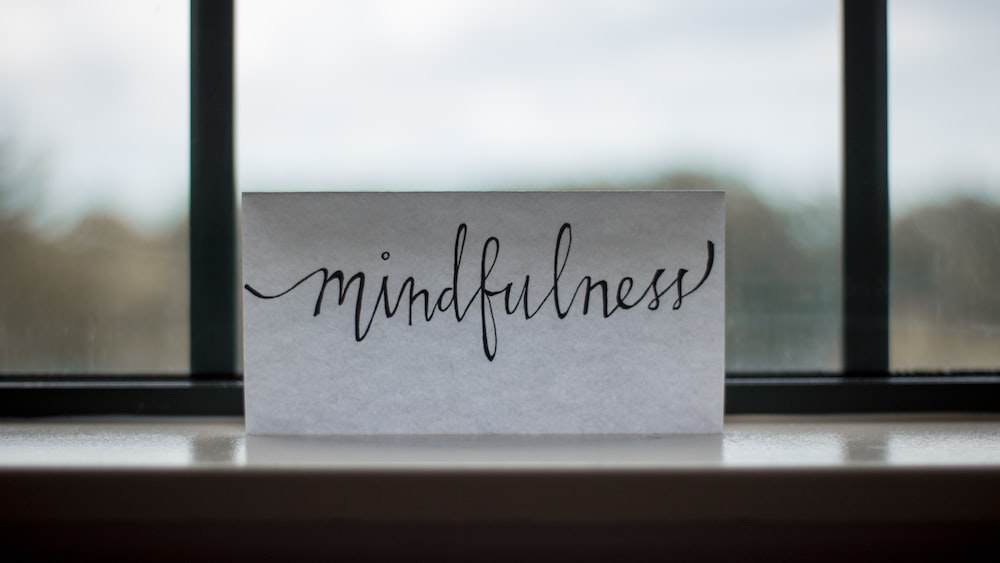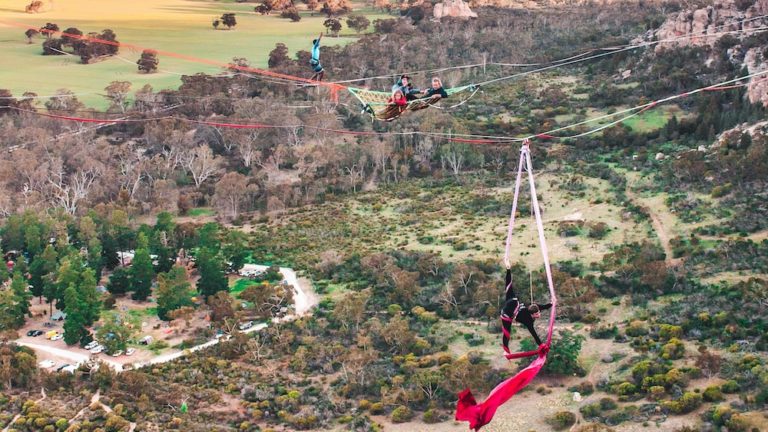How To Teach Mindfulness: Your Ultimate Guide
Welcome to your ultimate guide on how to teach mindfulness! In this comprehensive article, we’ll explore the ins and outs of mindfulness, its benefits, and how to effectively teach this life-changing practice to people of all ages. So, whether you’re an educator, mental health professional, or simply someone passionate about self-growth, this guide is for you.
As the world becomes more fast-paced and demanding, the practice of mindfulness is rapidly gaining popularity. Why, you ask? Well, it’s because this ancient wisdom offers us a way to find peace and balance amidst the chaos of our modern lives. In this guide, we’ll dive deep into the core principles, essential techniques, and best practices for teaching mindfulness. So, get ready to embark on a transformative journey that will not only change your life but also the lives of those around you.
But first, let’s start by understanding what mindfulness really is and the plethora of benefits it brings to our lives. We’ll then explore the basics of teaching mindfulness, adapting it to different age groups, and incorporating it into various settings such as schools, workplaces, and therapy sessions.
Finally, we’ll share some practical tips for effective mindfulness teaching, along with online resources and courses to support your journey as a mindfulness educator. So, without further ado, let’s dive right in!
Understanding Mindfulness
To effectively teach mindfulness, it’s crucial to have a deep understanding of what it is, its history, and the science behind it. In this section, we’ll unravel the mystery of mindfulness and uncover its many benefits to our mental, emotional, and physical well-being.
What is Mindfulness?
Mindfulness is a mental state achieved by focusing our attention on the present moment while acknowledging and accepting our thoughts, emotions, and bodily sensations without judgment. It’s an ancient practice that has its roots in Buddhism, but it’s not limited to any particular religion or belief system.
Jon Kabat-Zinn, a renowned mindfulness expert, defines it as “paying attention in a particular way: on purpose, in the present moment, and non-judgmentally.” By cultivating this quality of non-judgmental awareness, we are able to observe our thoughts and feelings as they arise without getting caught up in them, thus reducing stress and increasing our overall well-being.
Mindfulness practice can take many forms, including meditation, mindful movement (like yoga or tai chi), and everyday activities such as mindful eating or walking. It’s a skill that can be developed and refined over time, providing us with invaluable tools to navigate life’s challenges with greater ease, clarity, and resilience.
Focusing on the present moment without judgment, practicing mindfulness can reduce stress and increase overall well-being, providing invaluable tools to navigate life’s challenges.
Benefits of Mindfulness
The benefits of mindfulness are backed by a growing body of scientific research, demonstrating its profound impact on our mental, emotional, and physical health. Some of the key benefits include:
- Reduced stress and anxiety: Mindfulness helps us break free from the cycle of rumination and worry by teaching us to observe our thoughts and emotions without getting swept away by them.
- Improved focus and concentration: By training our minds to remain present, we can enhance our ability to concentrate, making it easier to stay on task and avoid distractions.
Teaching Mindfulness: The Basics
Before diving into teaching mindfulness, it’s essential to familiarize yourself with its core principles and the practices that form its foundation. This will enable you to create a structured and effective learning experience for your students or clients.
Core Principles of Mindfulness
There are several core principles that underlie the practice of mindfulness. These include:

- Non-judgment: Cultivating an attitude of curiosity and acceptance towards our thoughts, emotions, and experiences, without labeling them as good or bad.
- Patience: Understanding that the process of change and growth unfolds at its own pace, and allowing ourselves to be patient with ourselves and others as we learn and grow.
Essential Techniques and Practices
There are numerous techniques and practices that can help develop mindfulness skills. Some of the most common and effective methods include:
- Mindfulness meditation: Sitting in a comfortable position, focusing on your breath, and gently bringing your attention back to your breath whenever your mind wanders.
- Body scan meditation: A practice where you systematically bring your attention to different parts of your body, noticing any sensations, tension, or discomfort.
- Loving-kindness meditation: A practice that involves cultivating feelings of love, compassion, and goodwill towards yourself and others.
Teaching Mindfulness to Different Age Groups
Mindfulness can be adapted and taught to people of all ages, from young children to older adults. In this section, we’ll explore how to tailor your mindfulness teaching approach to different age groups, ensuring that it remains accessible, engaging, and relevant to their unique needs and circumstances.
Mindfulness for Children
Teaching mindfulness to children can have a lasting impact on their emotional, cognitive, and social development. Some tips for introducing mindfulness to children include:
- Using age-appropriate language: Simplify concepts and use language that children can easily understand.
- Incorporating fun and engaging activities: Use games, stories, and creative exercises to make mindfulness more enjoyable and appealing to children.
Mindfulness for Teens
Teenagers can greatly benefit from mindfulness, as it can help them navigate the challenges of adolescence and develop healthy coping strategies. To teach mindfulness to teens, consider these tips:
- Highlight the relevance of mindfulness: Explain how mindfulness can help them manage stress, improve concentration, and enhance emotional regulation.
- Create a safe and non-judgmental space: Encourage open discussion and sharing of experiences, while maintaining an atmosphere of acceptance and understanding.
Mindfulness for Adults
Adults can also reap the numerous benefits of mindfulness, as it can help them manage stress, improve relationships, and enhance overall well-being. When teaching mindfulness to adults, consider the following:
- Provide clear instructions: Adults often appreciate detailed guidance and explanations to help them understand the rationale behind each practice.
- Encourage consistent practice: Remind adults that, like any skill, mindfulness takes time and regular practice to develop and refine.
Mindfulness can help adults manage stress, improve relationships, and enhance overall well-being, but it requires clear instructions and consistent practice to develop and refine.
Incorporating Mindfulness into Various Settings
In today’s fast-paced world, it’s more important than ever to find moments of calm and stillness. Mindfulness is a practice that can provide just that, and the best part is that it can be incorporated into a wide range of settings. From schools and workplaces to therapy and counseling sessions, mindfulness can truly make a difference in our daily lives. Let’s explore how to integrate mindfulness into these different environments.
Mindfulness in Schools
Introducing mindfulness in schools can be an effective way to help students cope with stress, improve their focus, and develop emotional resilience. By teaching mindfulness techniques like meditation and deep breathing, educators can provide students with valuable tools to navigate the challenges of academic life.
Many schools have successfully implemented mindfulness programs, which often include daily meditation or relaxation exercises, as well as classroom activities that promote self-awareness and emotional regulation. These programs have been shown to improve students’ well-being and academic performance, making mindfulness an essential component of modern education.
Mindfulness in the Workplace
The workplace can be a major source of stress for many people, and incorporating mindfulness practices can help employees manage their stress levels, improve productivity, and enhance overall job satisfaction. Companies that embrace mindfulness often see significant improvements in employee engagement and well-being.
To introduce mindfulness in the workplace, employers can offer workshops, seminars, or training sessions that teach mindfulness techniques. Additionally, creating designated spaces for meditation, offering regular mindfulness breaks, and encouraging open communication about mental health can all contribute to a more mindful work environment.
Mindfulness in Therapy and Counseling
Mindfulness has become an increasingly popular component of therapy and counseling, as it can help individuals develop greater self-awareness, emotional regulation, and resilience. Many therapists incorporate mindfulness exercises into their sessions, teaching clients how to use these techniques to cope with difficult emotions, stress, and trauma.
Research has shown that mindfulness-based therapies can be effective in treating a wide range of mental health issues, including anxiety, depression, and post-traumatic stress disorder. By incorporating mindfulness into therapeutic settings, mental health professionals can provide clients with the tools they need to live happier, healthier lives.
Mindfulness Activities and Exercises
Incorporating mindfulness into your daily routine doesn’t have to be complicated. In fact, there are many simple activities and exercises you can try to help you cultivate a more mindful and present way of living. Let’s explore some popular mindfulness practices to get you started.
Breathing Exercises
Breathing exercises are a fundamental aspect of mindfulness practice, as they help to anchor your awareness in the present moment. By focusing on your breath, you can quiet your mind and cultivate a sense of inner calm.
- Mindful Breathing: Find a comfortable position, either sitting or lying down, and close your eyes. Take a few deep breaths, inhaling through your nose and exhaling through your mouth. Then, allow your breath to return to a natural rhythm. Notice the sensation of your breath as it moves in and out of your body, and gently bring your focus back to your breath whenever your mind starts to wander.
- 4-7-8 Breathing Technique: This technique involves inhaling for a count of four, holding the breath for a count of seven, and exhaling for a count of eight. Repeat this cycle for a few minutes to help calm your nervous system and reduce stress.
Body Scan Meditation
Body scan meditation is a powerful mindfulness exercise that helps you develop greater awareness of your physical sensations and any areas of tension or discomfort in your body. Here’s how to practice a body scan:
- Find a comfortable position, either sitting or lying down, and close your eyes.
- Take a few deep breaths to center yourself in the present moment.
- Starting at the top of your head, gradually move your attention down through your body, noticing any sensations or areas of tension as you go. Take your time, spending a few moments on each part of your body.
- As you complete the body scan, take a few more deep breaths and then gently open your eyes.
Mindful Eating
Mindful eating is a practice that involves paying close attention to your senses and the experience of eating, rather than simply consuming food on autopilot. This can help you develop a healthier relationship with food and prevent overeating.

- Choose a small portion of food, such as a piece of fruit or a few nuts.
- Before eating, take a moment to observe the appearance, smell, and texture of the food.
- As you take your first bite, savor the taste and texture, chewing slowly and deliberately.
- Continue eating in this mindful way, giving your full attention to each bite and the sensations it produces.
Walking Meditation
Walking meditation is a mindfulness practice that involves bringing your full awareness to the experience of walking. It can be a refreshing and grounding alternative to sitting meditation.
To practice walking meditation:
- Find a quiet place where you can walk without distractions, such as a park or a quiet hallway.
- Begin walking at a slow, comfortable pace, focusing on the sensation of each step as your foot makes contact with the ground.
- As you walk, maintain your focus on the physical sensations of walking, gently bringing your attention back to your steps whenever your mind wanders.
Tips for Effective Mindfulness Teaching
Teaching mindfulness can be a deeply rewarding experience, but it also comes with its fair share of challenges. To ensure that your mindfulness teaching is effective and engaging, consider the following tips and best practices.
Creating a Safe and Comfortable Environment
One of the key factors in successful mindfulness teaching is creating a safe and comfortable environment for your students or clients. This means providing a space where they feel supported, understood, and free to explore their thoughts and emotions without judgment.
To create a safe and comfortable environment:
- Ensure that the physical space is clean, well-lit, and free of distractions
- Set clear ground rules for group interactions, such as maintaining confidentiality and showing respect for one another’s experiences
- Encourage open communication and allow students or clients to share their thoughts and feelings without fear of criticism or judgment
Creating a safe and comfortable environment is crucial for successful mindfulness teaching, which includes a clean and well-lit physical space, clear ground rules, and encouraging open communication.
Adapting to Individual Needs
As a mindfulness teacher, it’s crucial to adapt your approach to each individual’s needs. People come from different backgrounds and may have unique challenges, preferences, or learning styles. By tailoring your teaching methods, you’ll be able to create a more inclusive and effective learning environment.
For instance, some individuals might prefer visual aids, while others may be more responsive to auditory cues. Furthermore, certain participants may have physical limitations that require modifications to specific mindfulness exercises. Being aware of these differences and adapting your teaching accordingly will lead to a more impactful and enjoyable experience for everyone involved.
Encouraging Consistent Practice
One of the keys to reaping the benefits of mindfulness is consistency. As a teacher, it’s essential to encourage your students to establish a regular mindfulness practice. This can be achieved by providing them with practical tips on how to integrate mindfulness into their daily lives, such as setting aside time for meditation or engaging in mindful activities throughout the day.

Additionally, create a supportive and motivating environment by celebrating small successes and progress. Remind your students that mindfulness is a skill that takes time and practice to develop. Sharing your own experiences and challenges can also help foster a sense of camaraderie and perseverance among your students.
Online Resources and Courses for Mindfulness Teaching
In today’s digital age, there are numerous online resources available for aspiring mindfulness teachers. These resources can provide valuable tools, techniques, and inspiration to help you become a more effective and confident instructor.
Recommended Online Courses
There are several reputable online courses available that can help you hone your mindfulness teaching skills. Some highly recommended options include:
- Mindfulness-Based Stress Reduction (MBSR) Teacher Training: Offered by the Center for Mindfulness in Medicine, Health Care, and Society, this program provides comprehensive training in the widely recognized MBSR approach.
- Mindful Schools: This organization offers a variety of courses specifically designed for educators who want to incorporate mindfulness into their classrooms.
- Palouse Mindfulness: This free, self-paced online MBSR course is a great starting point for those who want to learn more about mindfulness and its applications.
Helpful Apps and Websites
Several apps and websites can help you develop your mindfulness teaching skills and provide resources for your students. Some popular choices include:
- Headspace: A well-known mindfulness app that offers guided meditations, articles, and resources for both beginners and experienced practitioners.
- Calm: This popular app provides meditation sessions, sleep stories, and soothing music to help users relax and practice mindfulness.
- Mindful.org: A comprehensive website that offers articles, videos, and guided meditations on various mindfulness topics.
FAQs
1. How long does it take to see the benefits of mindfulness?
Seeing the benefits of mindfulness can vary for each individual, but many people report experiencing positive effects within just a few weeks of consistent practice. However, it’s essential to remember that mindfulness is a lifelong journey, and the benefits will continue to grow and deepen over time.
2. Can mindfulness be taught to individuals with special needs?
Yes, mindfulness can be taught to individuals with special needs. In fact, mindfulness has been shown to have numerous benefits for people with a wide range of cognitive, emotional, and physical challenges. However, it’s crucial to adapt your teaching approach to meet the unique needs and abilities of each individual.
3. How can I measure the effectiveness of my mindfulness teaching?
Measuring the effectiveness of your mindfulness teaching can be done through various means, such as observing changes in your students’ behavior, emotional well-being, and overall quality of life. Additionally, you can gather feedback from your students through regular check-ins or anonymous surveys to gain insight into their experiences and progress.
4. Are there any potential risks or downsides to teaching mindfulness?
While mindfulness is generally considered safe and beneficial for most people, it’s important to be aware of potential risks or downsides. For example, some individuals may experience increased anxiety or emotional discomfort during mindfulness practice, particularly if they have a history of trauma or mental health issues. As a teacher, it’s essential to be sensitive to these potential challenges and provide appropriate support and guidance for your students.
Conclusion
Teaching mindfulness is a rewarding and fulfilling endeavor. By developing a deep understanding of mindfulness principles, adapting to individual needs, and encouraging consistent practice, you can make a significant impact on your students’ lives. Don’t forget to explore the wealth of online resources, courses, and tools available to help you become a more effective and compassionate mindfulness teacher.
Remember, mindfulness is a lifelong journey, not only for your students but also for yourself as a teacher. Embrace the challenges, celebrate the successes, and continue to grow and learn together. The world needs more mindfulness, and you have the power to make a difference.
I wish you the best! Fabian.
Share with your Friends:






